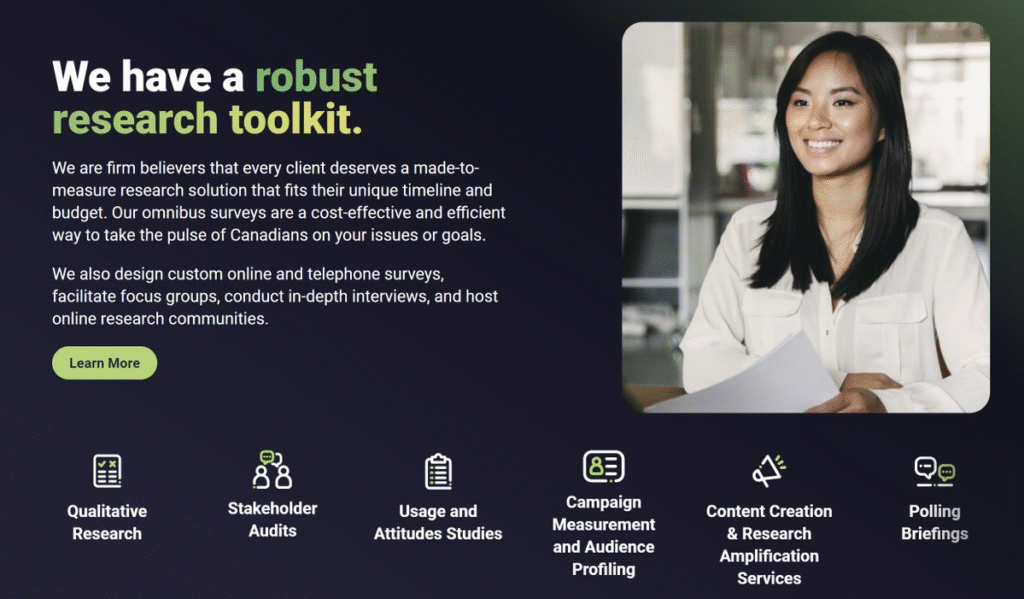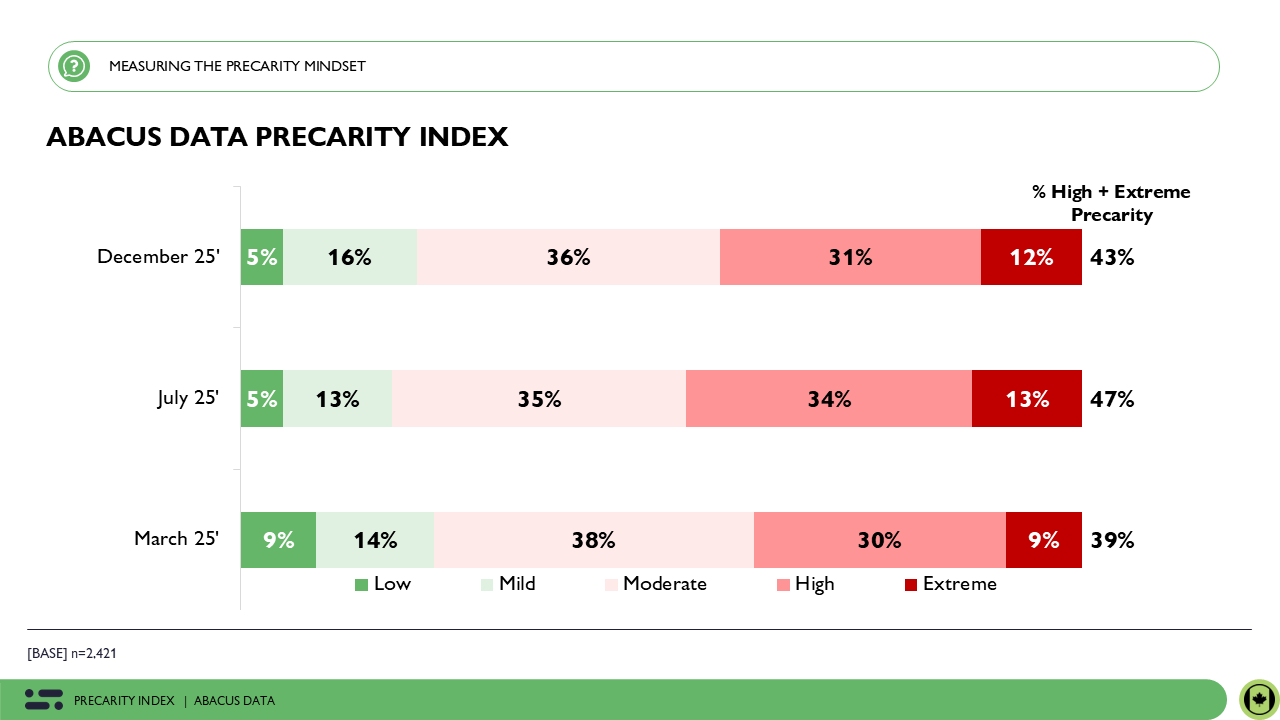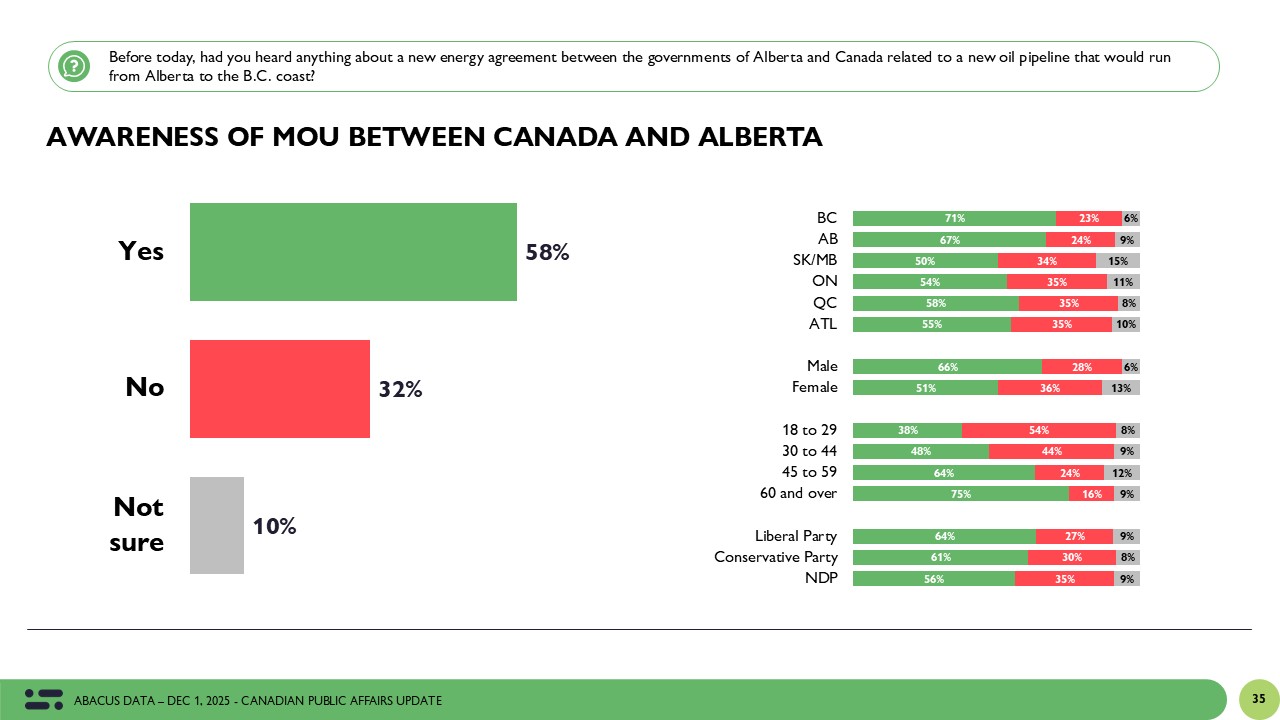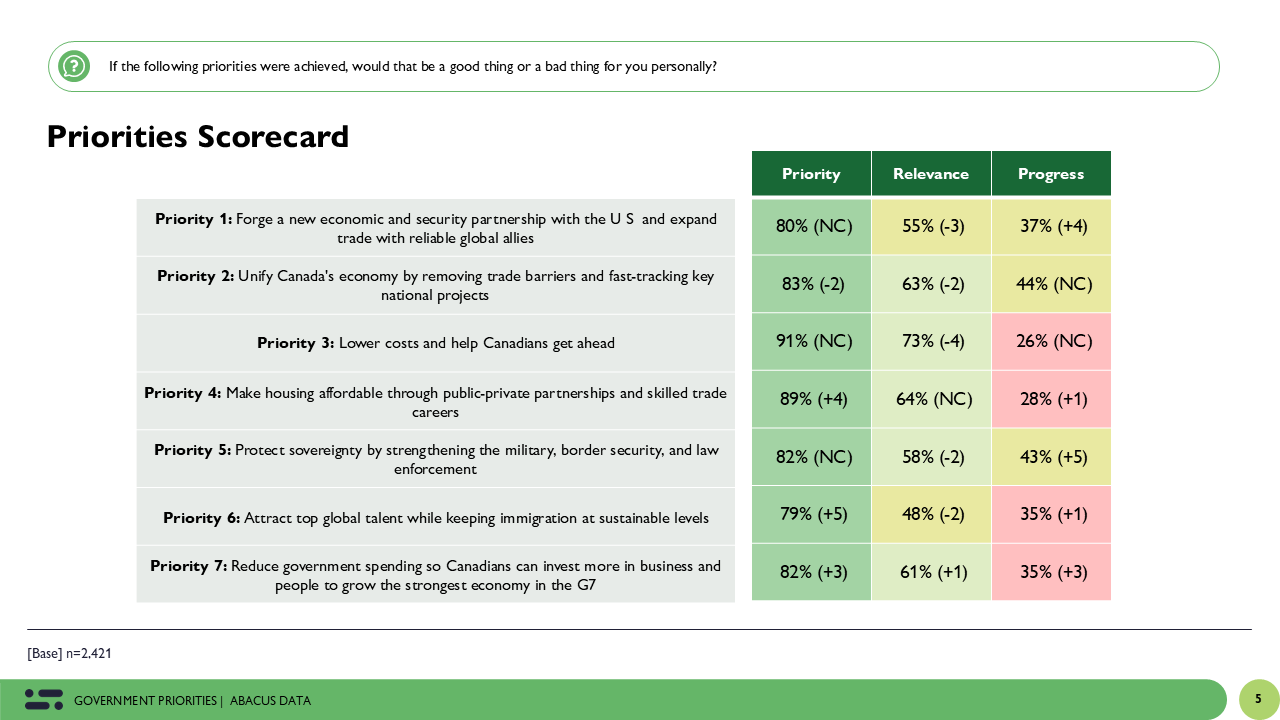Bridging Generations in the Workplace: What our Research Tells Us
October 7, 2025
This week, I had the opportunity to deliver a webinar to more than 1,300 lawyers from across Canada on the topic of Bridging Inter-Generational Workplaces. The audience was large and diverse — from managing partners and senior counsel to articling students just starting out — but the questions they asked were strikingly similar to those I hear from employers and leaders in every sector.
How do we understand what motivates younger workers? Why do generational tensions seem to surface so easily? And how do we create workplaces that can engage everyone, from those nearing retirement to those just entering the profession?
These questions have been central to my work for almost two decades. Fifteen years ago, I launched the Canadian Millennials practice at Abacus Data, the first dedicated research program in the country focused on understanding how generational change was reshaping politics, business, and culture. Since then, our team has become Canada’s leading agency for helping organizations navigate how generational differences influence leadership, engagement, and innovation by conducting the best research possible. Today, as Gen Z enters the workforce in large numbers, the conversation has evolved but the goal remains the same: to help leaders understand the “why” behind different expectations about work.
A Precarity Mindset Shapes How We Work
Much of the context for these generational differences begins with what I call the precarity mindset, a worldview shaped by unpredictability and instability. As I explained in the presentation, many people no longer see the future as stable or institutions as reliable
Younger generations, in particular, have grown up through overlapping crises: the Great Recession, climate anxiety, the housing affordability crisis, and now, economic uncertainty coupled with rapid technological change. They’ve never known a world that feels secure.
This sense of precarity affects how people make decisions about their careers. For older generations, loyalty to an employer once offered stability. For younger ones, that stability doesn’t exist, so they seek it elsewhere, often through flexibility, side hustles, or new ways to define success. As I tell leaders: if you feel your younger staff are restless or impatient, it’s not because they’re fickle or impatient. It’s because they were socialized to survive in an unpredictable world.
How They Were Raised — and Why It Matters
Understanding how each generation was raised helps explain their values at work. Baby Boomers grew up in a world of post-war optimism and institutional trust. Gen X came of age amid rising divorce rates and economic volatility, learning to rely on themselves. Millennials were told they could “achieve anything they wanted” — 85% of them say someone told them that growing up— and they experienced open communication and flatter hierarchies at home and school. Gen Z, meanwhile, is the first fully digital generation, raised in a world of constant feedback loops, performance metrics, and online comparison.
These distinct socializations influence how each group communicates, handles feedback, and defines professionalism. Boomers often value loyalty and face-to-face interaction. Gen X seeks autonomy and efficiency. Millennials crave collaboration, purpose, and growth. Gen Z demands transparency, diversity, and psychological safety. None of these perspectives are “right” or “wrong” — they simply reflect the environments that shaped each generation.
Why Conflict Happens
One of the slides that resonated most with the legal audience outlined what triggers each generation at work.
Baby Boomers feel disrespected by informality and rapid change.
Gen X can become frustrated by what they see as entitlement or over-collaboration.
Millennials are disillusioned when systems feel rigid or purpose is unclear.
Gen Z struggles when they experience a lack of flexibility or emotionally distant leadership
In a professional services firm context, these tensions often play out in predictable ways: a senior partner bristles at being questioned by a junior associate; a Gen X manager rolls their eyes at a young professional asking for client exposure too soon; a Millennial analyst feels unseen when feedback is minimal; a Gen Z clerk pushes back on a five-day return-to-office policy. Each reaction makes sense when viewed through the lens of lived experience and that’s precisely the point. Conflict isn’t about personality. It’s about perspective.
The Evolution of Work Expectations
Another key theme from the research is how workplace expectations evolve but rarely disappear. As I put it during the session:
“Baby Boomer dreams became Gen X hopes, which became Millennial preferences and have now become Gen Z expectations.”
What older generations once aspired to — flexibility, purpose, and autonomy — are now baseline demands for younger workers. The data in our presentation show that the average time spent in a job has fallen from 8 years among Boomers to just over 2 years among Gen Z. That doesn’t mean young people are disloyal; it means they’re navigating a market that rewards mobility, not longevity. Retention today depends less on long-term promises and more on day-to-day meaning.
The Four Keys from the Research
The closing section of my presentation focused on four key insights that apply to every organization, not just law firms.
1. Flexibility is the New Currency
Flexibility doesn’t mean chaos. It means giving people choices — a “menu” of options rather than a one-size-fits-all model. Younger employees often see flexibility as a sign of respect; older employees see it as autonomy. In both cases, it’s about trust.
2. The Feedback Gap is Real
According to Gallup data I shared, 78% of Gen Z workers want regular feedback compared with just 45% of Boomers. That’s a huge gap — and a major source of frustration. Younger staff equate silence with disinterest, while older leaders may see frequent feedback as hand-holding. The solution is simple: consistency.
3. Technology — Especially AI — is Divisive
Adoption of AI tools varies dramatically by age: 75% of Gen Z workers report using AI at work, compared to only 36% of Boomers. This gap isn’t just technical; it’s cultural. AI feels intuitive to younger workers but also existentially threatening and for older workers intimidating. Successful organizations are bridging this divide by creating space for shared learning, not judgment.
4. Impatience Isn’t a Character Flaw
Finally, one of the most important findings: impatience isn’t a generational trait, it’s situational. Millennials and Gen Z are facing record housing costs, unprecedented debt, and slower pathways to stability. Their urgency is rational. Empathy, not criticism, is the better leadership response.
What It All Means
After fifteen years of studying generational change, I’ve learned that every workplace conversation — about return-to-office, technology, mentorship, or leadership — is really a conversation about identity. People aren’t just negotiating schedules; they’re negotiating values: fairness, belonging, control, and respect.
In the webinar, I told participants that the goal isn’t to eliminate generational differences but to translate them. A Gen Z lawyer and a Baby Boomer partner can want the same thing — to do good work and feel valued — but the path to get there looks different. The most effective leaders are those who adapt, listen, and meet people where they are.
By asking people questions, our work continues to help organizations do exactly that. Whether in law firms, hospitals, or corporate boardrooms, generational change is rewriting the unwritten rules of work. Understanding those changes isn’t just a matter of curiosity — it’s now essential for performance, retention, and culture.
To see how I can engage your audiences with a presentation or keynote, or uncover what drives your audience, reach out. I’d be happy to connect.




